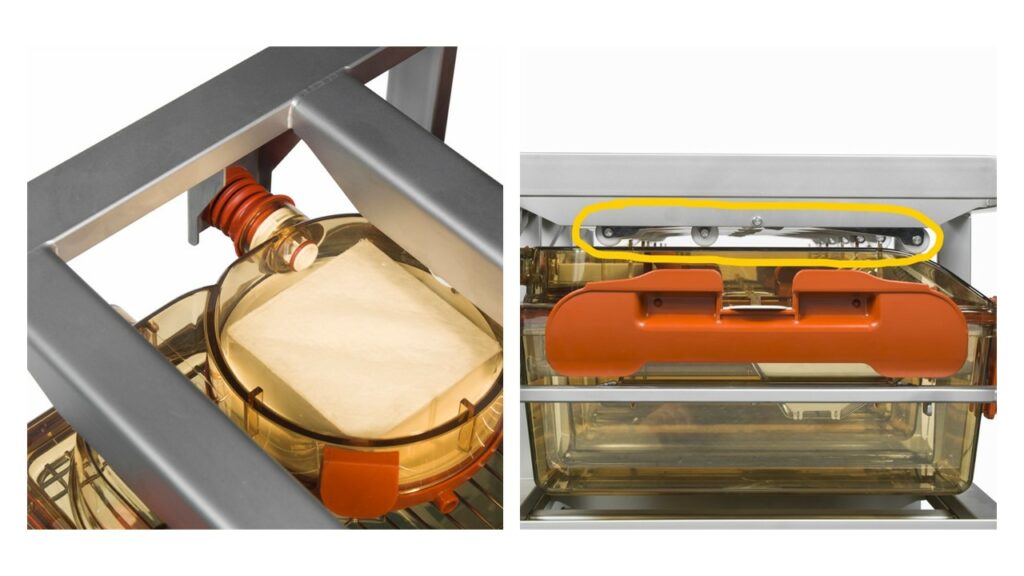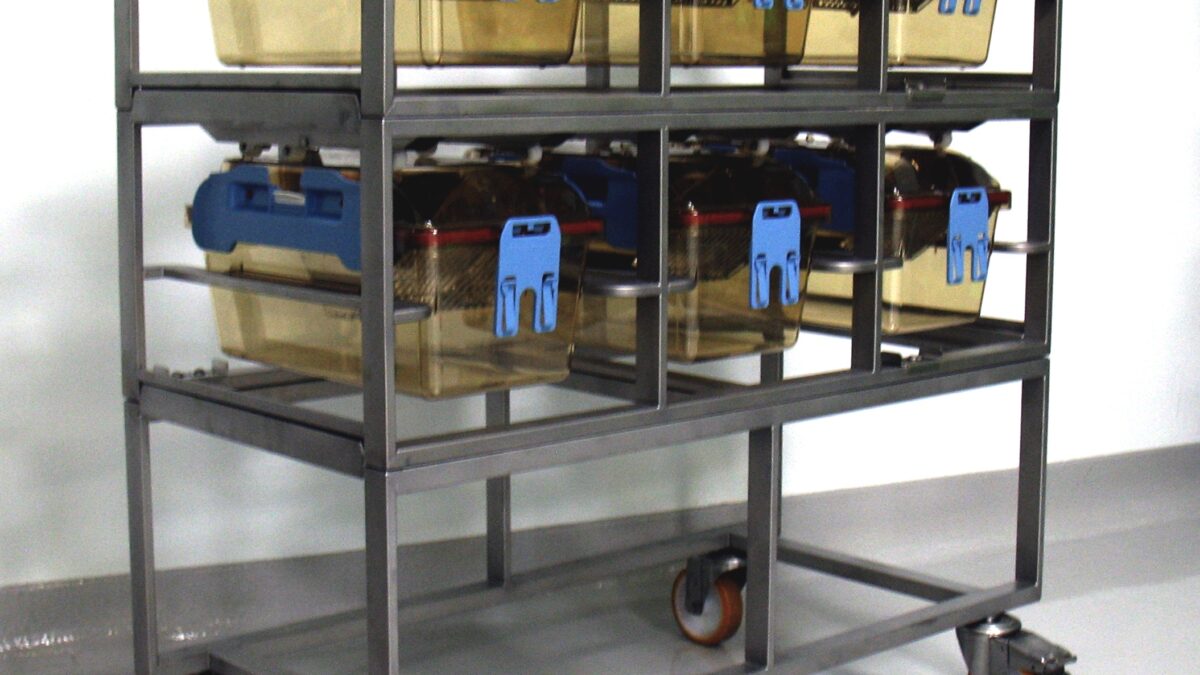On the subject of germ-free animals and equipment used for housing the first word that comes to mind is “sterility”.
In order to reach an aseptic environment it is crucial to perform accurate decontamination of everything that will come into contact with the animals, starting from the cage used for housing.
To sterilise a germ free cage it is very common to use autoclave cycles that, thanks to a combination of temperature, pressure and exposure time, allow a complete and trustable decontamination to be achieved.
However, the procedural aspects involved in the autoclaving process of a germ free cage are very different from the standard IVC, because of the need to guarantee that the internal parts of the cage will remain sterile in between the autoclave and the Biosafety Cabinet surface, when the animals are placed in the cage.
This means that the cage should be closed or bagged during this procedure.
This may seem easy, but there are a few crucial aspects to consider:
- the cage for germ-free animal is usually an hermetic and air-tight cage
- the tightness of a germ-free cage is usually ensured by a combination of sealings and latches
meaning that the steam of the autoclave has no chance to enter and sterilise the inner part, plus the vacuum of the autoclave would damage and deform the cage and these components if the tension is not released somehow.
Over the years, industrial improvement has helped researchers to reach the most successful results in the most ergonomic way, and one example is the fact that it is now possible to autoclave a fully assembled germ-free cage thanks to specifically designed decontamination racks.
The decontamination rack allows the operator to autoclave a fully assembled cage by means of a valve, that opens the cage nozzle on the HEPA filter side thus guaranteeing sterility, and a mechanism that ensures the tightness of the cage base and top allowing the release of the latches.

As soon as the autoclave cycle is finished, the cage latches can be closed and the cage safely undocked to perform the external decontamination and access the Biosafety Cabinet.
Safe, easy and ergonomic, wouldn’t you say?
Recent Articles
- Gnotobiotic facilities: writing inside isolators 4 April 2022
- Germ-free cage sterilization 24 January 2022
- Microbiota and its importance in aging 25 October 2021
- Procedural diversity and technical choices working with gnotobiotic mice in IVCs. (part 2) 27 September 2021
- Procedural diversity and technical choices working with gnotobiotic mice in IVCs. (part 1) 30 August 2021
DVC – Digital Ventilated Cage for digital vivarium

The DVC® is capable to provide novel insights and enhance animal welfare checks thanks to the automatic data collection directly from the cage level. Specifically designed DVC® board enables different benefits for the researchers and vivarium people.


